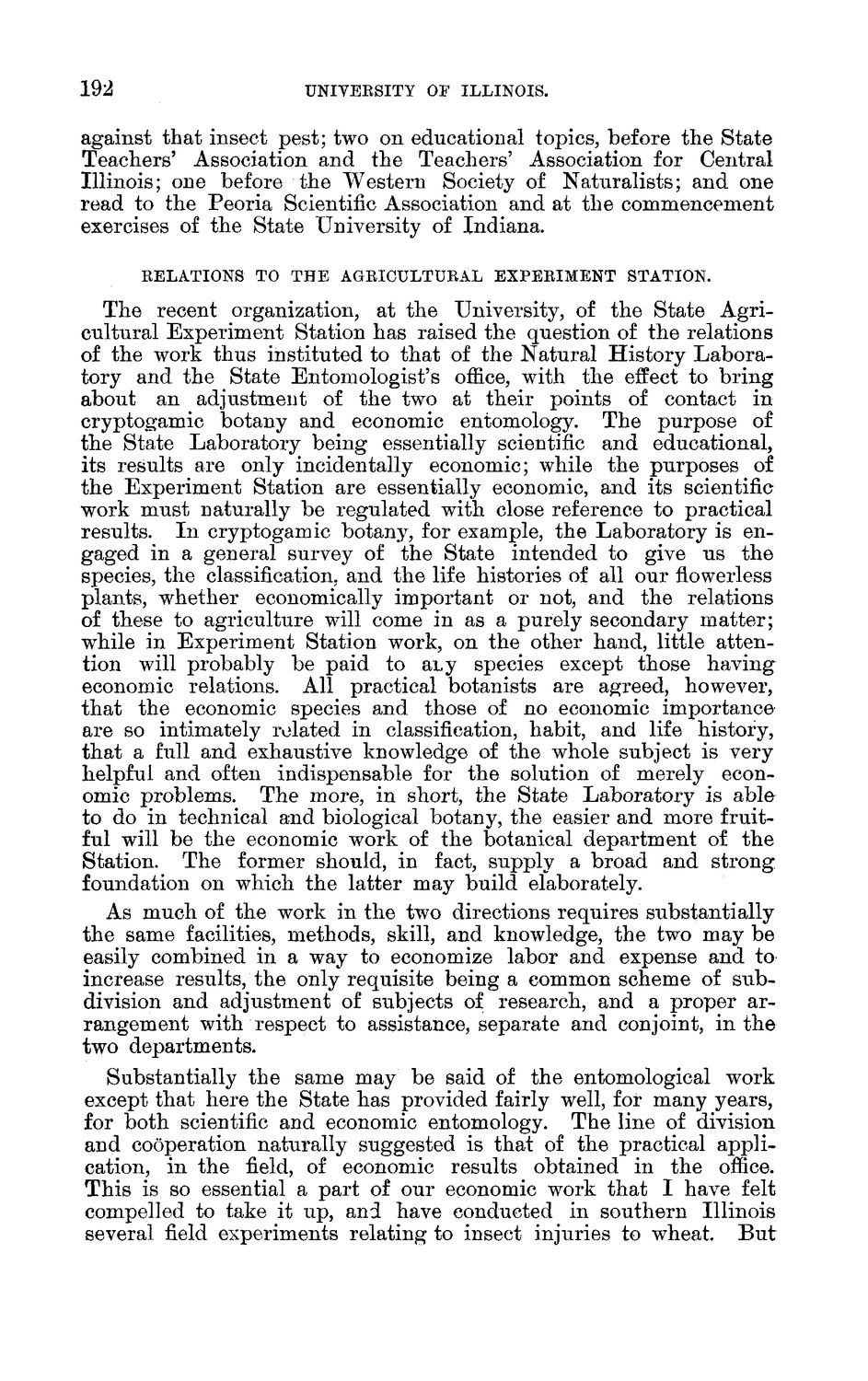| |
| |
Caption: Board of Trustees Minutes - 1888
This is a reduced-resolution page image for fast online browsing.

EXTRACTED TEXT FROM PAGE:
192 UNIVEESITY OF ILLINOIS. against that insect pest; two on educational topics, before the State Teachers' Association and the Teachers' Association for Central Illinois; one before the Western Society of Naturalists; and one read to the Peoria Scientific Association and at the commencement exercises of the State University of Indiana. RELATIONS TO THE AGRICULTURAL EXPERIMENT STATION. The recent organization, at the University, of the State Agricultural Experiment Station has raised the question of the relations of the work thus instituted to that of the Natural History Laboratory and the State Entomologist's office, with the effect to bring about an adjustment of the two at their points of contact in cryptogamic botany and economic entomology. The purpose of the State Laboratory being essentially scientific and educational, its results are only incidentally economic; while the purposes of the Experiment Station are essentially economic, and its scientific work must naturally be regulated with close reference to practical results. I n cryptogam ic botany, for example, the Laboratory is engaged in a general survey of the State intended to give us the species, the classification, and the life histories of all our flowerless plants, whether economically important or not, and the relations of these to agriculture will come in as a purely secondary matter; while in Experiment Station work, on the other hand, little attention will probably be paid to aLy species except those having economic relations. All practical botanists are agreed, however, that the economic species and those of no economic importance are so intimately related in classification, habit, and life history, that a full and exhaustive knowledge of the whole subject is very helpful and often indispensable for the solution of merely economic problems. The more, in short, the State Laboratory is able to do in technical and biological botany, the easier and more fruitful will be the economic work of the botanical department of the Station. The former should, in fact, supply a broad and strong foundation on which the latter may build elaborately. As much of the work in the two directions requires substantially the same facilities, methods, skill, and knowledge, the two may be easily combined in a way to economize labor and expense and to increase results, the only requisite being a common scheme of subdivision and adjustment of subjects of research, and a proper arrangement with respect to assistance, separate and conjoint, in the two departments. Substantially the same may be said of the entomological work except that here the State has provided fairly well, for many years, for both scientific and economic entomology. The line of division and cooperation naturally suggested is that of the practical application, in the field, of economic results obtained in the office. This is so essential a part of our economic work that I have felt compelled to take it up, and have conducted in southern Illinois several field experiments relating to insect injuries to wheat. B u t
| |